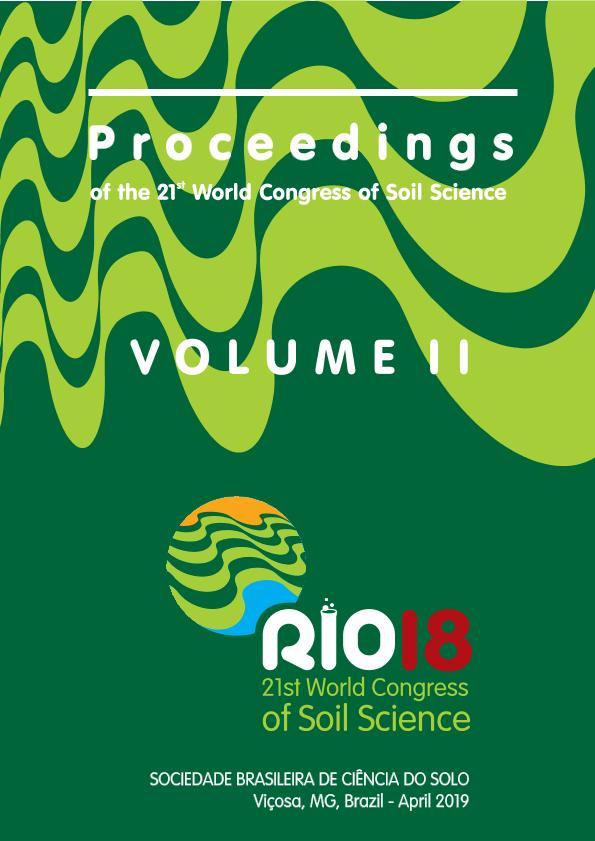Evento
Fish processing effluent discharges influenced chemical properties and microbial diversity in arid soils from Patagonia
Vallejos, Maria Belen ; Marcos, Magalí Silvina
; Marcos, Magalí Silvina ; Barrionuevo, Cristian Gustavo
; Barrionuevo, Cristian Gustavo ; Olivera, Nelda Lila
; Olivera, Nelda Lila
 ; Marcos, Magalí Silvina
; Marcos, Magalí Silvina ; Barrionuevo, Cristian Gustavo
; Barrionuevo, Cristian Gustavo ; Olivera, Nelda Lila
; Olivera, Nelda Lila
Tipo del evento:
Congreso
Nombre del evento:
21 World Congress of Soil Science
Fecha del evento:
12/08/2018
Institución Organizadora:
International Union of Soil Science;
Brazilian Soil Science Society;
Latin Ameican Soil Science Society;
Título del Libro:
Soil science: Beyond food and fuel: proceedings of the 21st World Congress of Soil Science, Rio de Janeiro, RJ, Brazil, August 12-17, 2018
Editorial:
Sociedade Brasileira de Ciencia do Solo
ISBN:
978-85-86504-27-3
Idioma:
Inglés
Clasificación temática:
Resumen
Even though fish processing industry uses large amounts of water, there is scarce knowledge about the possibility of its reuse for irrigation. In the arid Patagonian Monte, there are sites where fish processing effluents are discharged, resulting in a visible stimulation of native vegetation. Weanalyzed soil chemical properties and microbial diversity in a site where fish processing effluents are discharged (ES) and in a control site not disturbed (CS). At each site, 5 surface soil samples were randomly taken under plant-covered patches. We determined soil moisture, pH, electric conductivity (EC), sodium adsorption ratio (SAR), total C, inorganic C, total N, and concentrations of ammonium and nitrates+nitrites. Bacterial 16S V4 rDNA region was amplified and sequenced using MiSeq® Illumina platform. Operational taxonomic unit (OTU) clustering was performed with mothur using the Silva database. ES showed significantly higher values (p<0.05) of soil moisture (ES 12.9±0.7, CS 9.4±0.3%), EC (ES1.2±0.5, CS 0.6±0.2 mmhos/cm), total C (ES 0.86±0.10, CS0.42±0.03%), inorganic C (ES 0.46±0.12, CS 0.10±0.02%), and nitrates+ nitrites (ES 74.1±48.2, CS 4.26±0.13 μg/g) than CS. No significant differences were detected for pH, SAR, ammonium, and total N between sites. A total of 874,827 high quality reads were obtained for 10 samples (GOOD´s coverage > 94%). Effluent discharges induced a diminution of bacterial richness (OTUs) anddiversity (Inverse Simpson). Dendrogram (Bray-Curtis distance) as well as principal co-ordinate analysis show that control samples clustered together, while some samples from ES clustered with control samples and others with themselves. LEfSE analysis showed 580 biomarker OTUs with significantly differential abundances between sites, which were classified into 16 phyla. Thisanalysis showed that Archaea, mainly represented by Nitrososphaeraceae, were more abundant in CS. Besides, bacterial lineages enriched in CS included Acidobacteria, Actinobacteria, Chloroflexi, Gemmatimonadetes, Nitrospirae, Planctomycetes, Alphaproteobacteria, Deltaproteobacteria, andVerrucomicrobia. Biomarker OTUs from Gammaproteobacteria were more numerous in ES. Fish processing effluent discharges increased heterogeneity of soil chemical properties, reducing bacterial diversity and inducing shifts in the structure of the microbial community. This would be considered, and hence monitored, to preserve soil fertility when proposing fish effluent reuse for irrigation.
Palabras clave:
FISH PROCESSING EFFLUENTS
,
MICROBIAL DIVERSITY
,
ARID SOILS
Archivos asociados
Licencia
Identificadores
Colecciones
Eventos(IPEEC)
Eventos de INSTITUTO PATAGONICO PARA EL ESTUDIO DE LOS ECOSISTEMAS CONTINENTALES
Eventos de INSTITUTO PATAGONICO PARA EL ESTUDIO DE LOS ECOSISTEMAS CONTINENTALES
Citación
Fish processing effluent discharges influenced chemical properties and microbial diversity in arid soils from Patagonia; 21 World Congress of Soil Science; Río de Janeiro; Brasil; 2018; 195-195
Compartir



